??? ?? ??? ?? Live2D ???
29 likes5,161 views
?? ????? ??? Live2D? ??????. ????? ???? ???????.
1 of 54
Downloaded 58 times





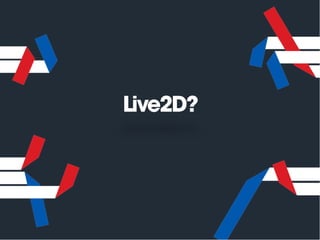
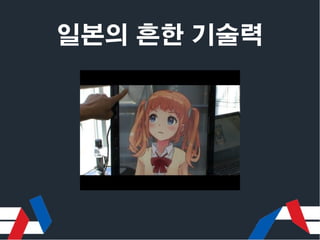

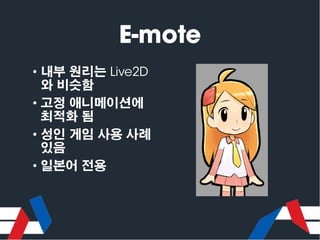
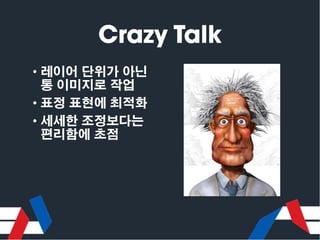
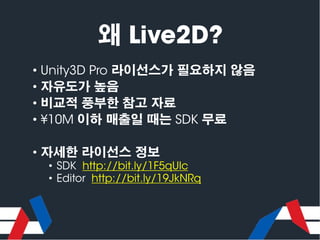

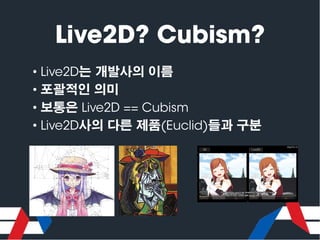
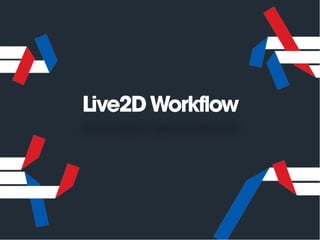
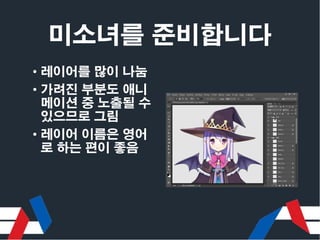

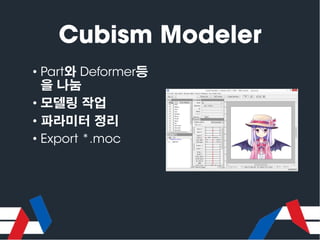
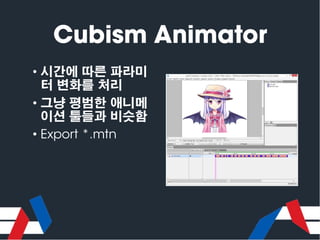
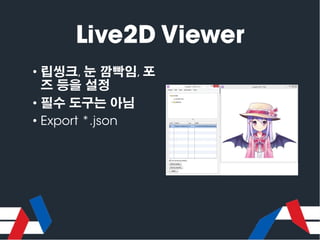

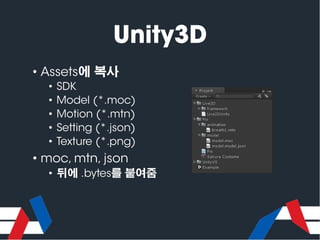

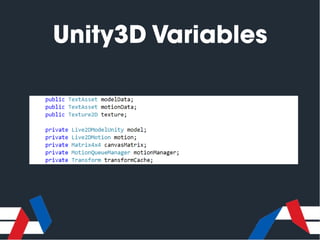

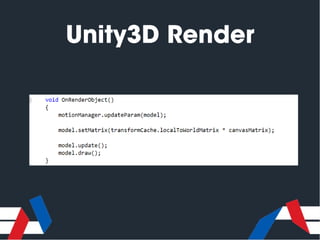
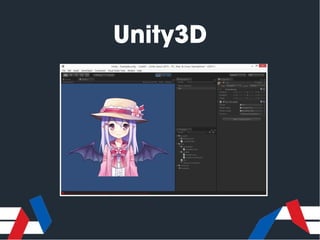
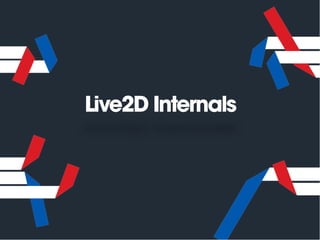
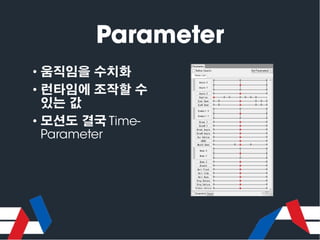

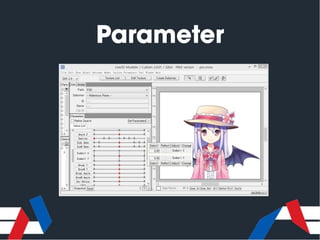

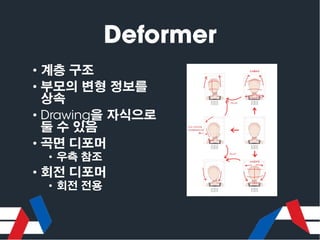

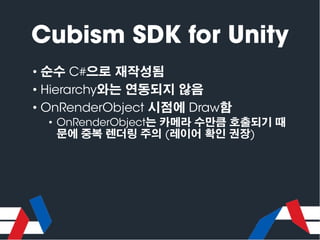
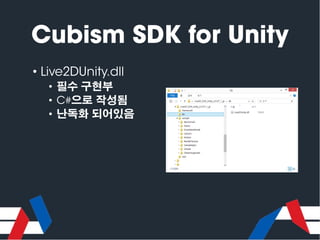
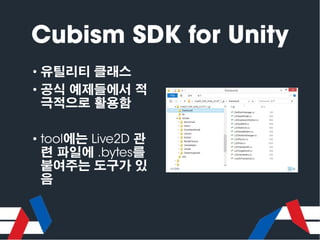

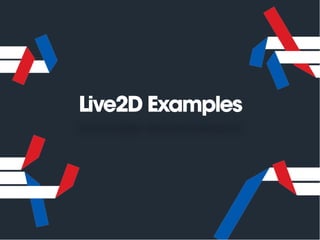
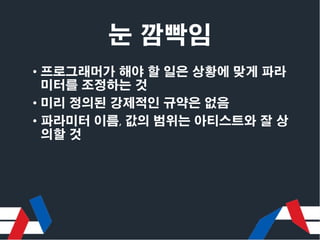

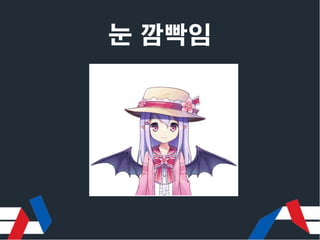
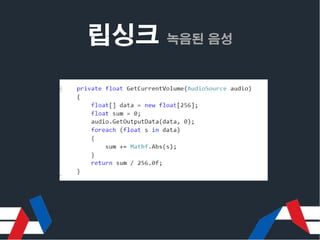

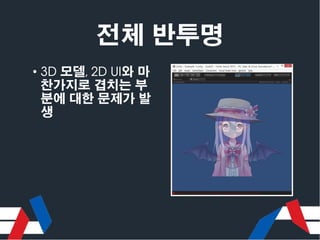



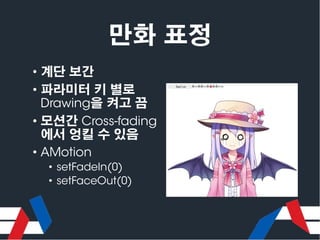


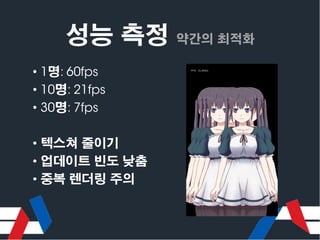
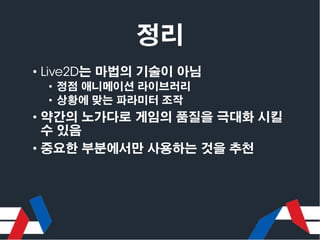
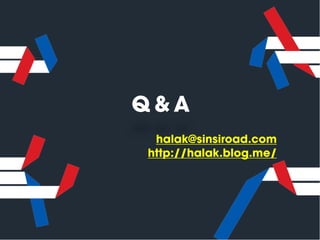
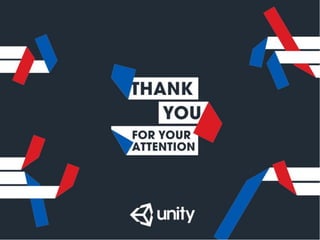
Ad
Recommended
Live2D with Unity - ???? ???? ?? ?? (???? ???)
Live2D with Unity - ???? ???? ?? ?? (???? ???)MinGeun Park
?
??? ??? 2017
Live2D with Unity
???? ???? ?? ??
????
???ĪŠCEDEC2018Ī┐CPUż“╩╣żżŪążņŻĪ Entity Component SystemŻ©═©│ŲECSŻ® ż¼ŪążĻķ_ż»ą┬żĘżżźūźĒź░źķź▀ź¾ź░
ĪŠCEDEC2018Ī┐CPUż“╩╣żżŪążņŻĪ Entity Component SystemŻ©═©│ŲECSŻ® ż¼ŪążĻķ_ż»ą┬żĘżżźūźĒź░źķź▀ź¾ź░Unity Technologies Japan K.K.
?
2018/8/22ż╦ķ_┤▀żĄżņż┐CEDEC2018ż╬ųvč▌┘Y┴ŽżŪż╣ĪŻ
ųvĤŻ║░▓įŁ ĄvČ■Ż©źµź╦źŲźŻ?źŲź»ź╬źĒźĖ®`ź║?źĖźŃźčź¾║Ž═¼╗ß╔ńŻ®ĪŠUnityĄ└ł÷ź╣ź┌źĘźŃźļ 2017▓®ČÓĪ┐TextMesh Pro ż“╩╣żżż│ż╩ż╣
ĪŠUnityĄ└ł÷ź╣ź┌źĘźŃźļ 2017▓®ČÓĪ┐TextMesh Pro ż“╩╣żżż│ż╩ż╣Unity Technologies Japan K.K.
?
2017/6/3ż╦ķ_┤▀żĄżņż┐UnityĄ└ł÷ź╣ź┌źĘźŃźļ 2017▓®ČÓż╬ųvč▌ź╣źķźżź╔żŪż╣ĪŻ
ųvĤŻ║ųą┤Õä鯩źµź╦źŲźŻ?źŲź»ź╬źĒźĖ®`ź║?źĖźŃźčź¾║Ž═¼╗ß╔ńŻ®
TextMesh Proż“╩╣żżż│ż╩ż╣ż┐żßż╬źęź¾ź╚ż“ĮBĮķżĘż▐ż╣ĪŻ
?TextMesh Proż╚żŽ║╬ż½Īó
?TextMesh Proż“╩╣ż”ż╚Ż©uGUIż╚▒╚▌^żĘżŲŻ®║╬ż¼┴╝żżż╬ż½
?ż╔ż╬żĶż”ż╦╩╣ż”ż╬ż½
ųvč▌äė╗ŁŻ║https://www.youtube.com/watch?v=Dx2l1-w7KEM
Unityż╬źżź┘ź¾ź╚┘Y┴ŽżŽż│ż┴żķż½żķŻ║
/UnityTechnologiesJapan/clipboardsTA? ???? (What is a Technical Artist? ???????)
TA? ???? (What is a Technical Artist? ???????)valhashi
?
?? ?? ?????? TA(???? ????)? ??, ??, TA? ?? ?? ??? ??? ?????? ?? ??? ??? ?????. ?? ???????? TA, TERA? TA? ???? ???? ????.
????? ?? ?? ?????? TA?? ??? ??? ?? ???, TA??? ?? ??(? 10?)?, ??? ??? ??? ??? ?? ??? TA? ?? ??? ????? ?????. ???, ?????? TA? ??? ??? ???? ????, TA?? ??? ??? ?? ???? ??? ??? ??? ??? ??? ????. ?? ??? ??? ????? ??? ?? ??, ???, ??????? TA ??? ??? ?? ??, ? ??? ???????.
?? ?? ??? ?? ??, ?? ???? ????? ???? TA? ?? ??? ????, ????? ??? ???? ?????.
??????? ?? ???: http://www.bluehole.net/recruit/information.html???? ????? ??? 3D ????? ??
???? ????? ??? 3D ????? ??MinGeun Park
?
???? ?? ????? ????, ????? ?? ?? ???? ?? ?? ?????.
?? ??? ?? ?????.
http://qiita.com/MuRo_CG/items/c417ef6d6cbeed3dd42bQt multi threads
Qt multi threadsYnon Perek
?
The document outlines best practices for handling concurrency in Qt applications, including the use of threads, event loops, and QtConcurrent algorithms. It discusses the importance of thread safety, locking mechanisms like QMutex and QSemaphore, and offers coding examples to illustrate these concepts. Additionally, it emphasizes using worker threads for I/O operations and leveraging QtConcurrent for efficient data processing.[NDC 2018] ???? ?? ???
[NDC 2018] ???? ?? ???Chris Ohk
?
NDC 2018, "???? ?? ??? - ???? ?? ??? ??? ???? ?? ????"? ?? ?????. ?? ???? ??? ???? ?????.Azure PlayFab ź╚źņ®`ź╦ź¾ź░┘Y┴Ž
Azure PlayFab ź╚źņ®`ź╦ź¾ź░┘Y┴ŽDaisuke Masubuchi
?
ź▓®`źÓźĄ®`źą®`ż╚żĘżŲ▒╩▒¶▓╣▓Ō╣¾▓╣▓·ż“╩╣ż”╩▒ż╬źŽź¾ź║ź¬ź¾źżź┘ź¾ź╚ż“żĘż▐żĘż┐ĪŻ1─Ļęį╔ŽĮU╣²żĘżŲż▐ż╣ż¼żĮż╬╩▒ż╬ū╩┴Žż“╣▓ėążĘż▐ż╣ĪŻIntro to Three.js
Intro to Three.jsKentucky JavaScript Users Group
?
Three.js is a popular JavaScript library that makes it easier to use WebGL by abstracting away its complexity. It represents 3D objects, cameras, lights and materials as JavaScript objects that can be easily manipulated to build 3D scenes. Basic components of a Three.js scene include a camera, lights, 3D meshes to represent objects, and materials applied to meshes. Common tasks like creating a renderer, camera, scene, adding objects and lights, and implementing an animation loop are demonstrated.Introduction to threejs
Introduction to threejsGareth Marland
?
This document provides an introduction to creating 3D scenes using the three.js library. It discusses the key components of a 3D scene: the light source, camera, and renderer. Common light sources like ambient, point, and directional lights are described. Perspective and orthographic cameras are covered. The renderer draws the scene. Examples are provided for setting up a basic scene with these components and adding objects, animating objects, selecting objects using raycasting, and controlling the camera. Advantages of 3D web development using three.js include being browser-based and able to integrate with other web technologies.WebRTC multitrack / multistream
WebRTC multitrack / multistreammganeko
?
WebRTCżŪChromeż╚FirefoxżŪ«Éż╩żļĪómulti-track / multi-stream ż╬Æżäėż╦ż─żżżŲš{ż┘żŲż▀ż▐żĘż┐3D ?? ????? ??
3D ?? ????? ??ByungChun2
?
?? ????? ??? ? 3D ???? ?? ??
3D ??? ?? ?? ? 3D ?????? ??? ?? ?? ????? ?? ????COMP 4010 - Lecture 3 VR Systems
COMP 4010 - Lecture 3 VR SystemsMark Billinghurst
?
The document discusses various tracking technologies and input devices used in virtual reality (VR) systems, including mechanical, magnetic, inertial, optical, and hybrid approaches. It outlines the advantages and disadvantages of each device type and explores user interaction methods, such as hand and body tracking, eye tracking, and input devices like gloves and controllers. Additionally, it highlights the importance of reducing system latency and optimizing VR design for user comfort and experience.ĪŠUnite Tokyo 2019Ī┐AWS for Unity Developers
ĪŠUnite Tokyo 2019Ī┐AWS for Unity DevelopersUnityTechnologiesJapan002
?
2019/9/25-6ż╦ķ_┤▀żĄżņż┐Unite Tokyo 2019ż╬ųvč▌ź╣źķźżź╔żŪż╣ĪŻ
Ž┬╠’ ╝āę▓Ż©źóź▐źŠź¾ź”ź¦źųźĄ®`źėź╣źĖźŃźčź¾ųĻ╩Į╗ß╔ńŻ®
Fan LiangŻ©źóź▐źŠź¾ź”ź¦źųźĄ®`źėź╣źĖźŃźčź¾ųĻ╩Į╗ß╔ńŻ®
ż│ż¾ż╩╚╦ż╦ż¬ż╣ż╣żß
?ź»źķź”ź╔źĄ®`źėź╣ż¼ż╔ż╬żĶż”ż╩╦∙żŪ╗Ņė├żŪżŁżļż½ų¬żĻż┐żż
?AWSż╬źĄ®`źėź╣╚║ż“╩╣ż├żŲż▀ż┐żżż¼ż╔ż│ż½żķ╩╝żßżņżążĶżżż½ż’ż½żķż╩żż
?ź▐źĘź¾źķ®`ź╦ź¾ź░Ą╚ą┬żĘżżź╚źņź¾ź╔ż╬╗Ņė├ż“żĘżŲż▀ż┐żż
╩▄ųvš▀ż¼Ą├żķżņżļų¬ęŖ
?AWSż╬źĄ®`źėź╣╚║Ż©╠žż╦Unityź▓®`źÓżõźóźūźĻżŪż╬└¹ė├ŅlČ╚ż¼Ė▀żżżŌż╬Ż®ż╦ķvż╣żļų¬ęŖ
?Unityż½żķż╬AWSż╬└¹ė├ĘĮĘ©
?ūŅą┬ż╬ź»źķź”ź╔äėŽ“
Unityż╬źżź┘ź¾ź╚┘Y┴ŽżŽż│ż┴żķż½żķŻ║
/UnityTechnologiesJapan/clipboards
┬}äćü╗šhŻ│żŪż╬UE4└¹ė├╩┬└²ż╬ĮBĮķ~Making of Mana | UNREAL FEST EXTREME 2020 WINTER
┬}äćü╗šhŻ│żŪż╬UE4└¹ė├╩┬└²ż╬ĮBĮķ~Making of Mana | UNREAL FEST EXTREME 2020 WINTERź©źįź├ź»?ź▓®`źÓź║?źĖźŃźčź¾ Epic Games Japan
?
UNREAL FEST EXTREME 2020 WINTER į┘╔·źĻź╣ź╚
https://www.youtube.com/playlist?list=PLr_Cbd4sUDTzxG9a4TrU0Rg6-ApCJBCsI
ųvč▌─┌╚▌Ż║
ĪĖ┬}äćü╗šhŻ│ TRIALS of MANAĪ╣ż╦żŲĪóęįŽ┬ż╬╩┬└²ż╦ż¬żżżŲUnreal Engine 4 ż“ż╔ż╬żĶż”ż╦╩╣ė├żĘż┐ż½ż“įöżĘż»ĮBĮķżĄż╗żŲżżż┐ż└żŁż▐ż╣ĪŻ
?źŁźŃźķź»ź┐®`ż╬▒Ē¼F
?źĘ®`ź▒ź¾źĄ®`ż“╩╣ż├ż┐źżź┘ź¾ź╚źĘ®`ź¾ż╬į┘╔·
?żĮż╬╦¹ź©ź¾źĖź╦źóŽ“ż▒TIPS
ųvč▌š▀Ż║
▒ŠĖµ ĄØę╗ ( ųĻ╩Į╗ß╔ńźĖ®`ź¾ MOE╩┬śI▓┐ źūźĒź░źķź▐®` )
£÷Ž┬ ų▒śõ ( ųĻ╩Į╗ß╔ńźĖ®`ź¾ Ą┌1ķ_░k╩┬śI▓┐ŽŃ┤©ź╣ź┐źĖź¬╩ęķL )
ų▓▒Š ą▐ŲĮ ( ųĻ╩Į╗ß╔ńźĖ®`ź¾ 3Dźó®`źŲźŻź╣ź╚ )
https://unrealengine.jp/unrealfest/
#ue4festTips and experience of DX12 Engine development .
Tips and experience of DX12 Engine development .YEONG-CHEON YOU
?
Tips and experience of DX12 Engine development .More Related Content
What's hot (20)
Qt multi threads
Qt multi threadsYnon Perek
?
The document outlines best practices for handling concurrency in Qt applications, including the use of threads, event loops, and QtConcurrent algorithms. It discusses the importance of thread safety, locking mechanisms like QMutex and QSemaphore, and offers coding examples to illustrate these concepts. Additionally, it emphasizes using worker threads for I/O operations and leveraging QtConcurrent for efficient data processing.[NDC 2018] ???? ?? ???
[NDC 2018] ???? ?? ???Chris Ohk
?
NDC 2018, "???? ?? ??? - ???? ?? ??? ??? ???? ?? ????"? ?? ?????. ?? ???? ??? ???? ?????.Azure PlayFab ź╚źņ®`ź╦ź¾ź░┘Y┴Ž
Azure PlayFab ź╚źņ®`ź╦ź¾ź░┘Y┴ŽDaisuke Masubuchi
?
ź▓®`źÓźĄ®`źą®`ż╚żĘżŲ▒╩▒¶▓╣▓Ō╣¾▓╣▓·ż“╩╣ż”╩▒ż╬źŽź¾ź║ź¬ź¾źżź┘ź¾ź╚ż“żĘż▐żĘż┐ĪŻ1─Ļęį╔ŽĮU╣²żĘżŲż▐ż╣ż¼żĮż╬╩▒ż╬ū╩┴Žż“╣▓ėążĘż▐ż╣ĪŻIntro to Three.js
Intro to Three.jsKentucky JavaScript Users Group
?
Three.js is a popular JavaScript library that makes it easier to use WebGL by abstracting away its complexity. It represents 3D objects, cameras, lights and materials as JavaScript objects that can be easily manipulated to build 3D scenes. Basic components of a Three.js scene include a camera, lights, 3D meshes to represent objects, and materials applied to meshes. Common tasks like creating a renderer, camera, scene, adding objects and lights, and implementing an animation loop are demonstrated.Introduction to threejs
Introduction to threejsGareth Marland
?
This document provides an introduction to creating 3D scenes using the three.js library. It discusses the key components of a 3D scene: the light source, camera, and renderer. Common light sources like ambient, point, and directional lights are described. Perspective and orthographic cameras are covered. The renderer draws the scene. Examples are provided for setting up a basic scene with these components and adding objects, animating objects, selecting objects using raycasting, and controlling the camera. Advantages of 3D web development using three.js include being browser-based and able to integrate with other web technologies.WebRTC multitrack / multistream
WebRTC multitrack / multistreammganeko
?
WebRTCżŪChromeż╚FirefoxżŪ«Éż╩żļĪómulti-track / multi-stream ż╬Æżäėż╦ż─żżżŲš{ż┘żŲż▀ż▐żĘż┐3D ?? ????? ??
3D ?? ????? ??ByungChun2
?
?? ????? ??? ? 3D ???? ?? ??
3D ??? ?? ?? ? 3D ?????? ??? ?? ?? ????? ?? ????COMP 4010 - Lecture 3 VR Systems
COMP 4010 - Lecture 3 VR SystemsMark Billinghurst
?
The document discusses various tracking technologies and input devices used in virtual reality (VR) systems, including mechanical, magnetic, inertial, optical, and hybrid approaches. It outlines the advantages and disadvantages of each device type and explores user interaction methods, such as hand and body tracking, eye tracking, and input devices like gloves and controllers. Additionally, it highlights the importance of reducing system latency and optimizing VR design for user comfort and experience.ĪŠUnite Tokyo 2019Ī┐AWS for Unity Developers
ĪŠUnite Tokyo 2019Ī┐AWS for Unity DevelopersUnityTechnologiesJapan002
?
2019/9/25-6ż╦ķ_┤▀żĄżņż┐Unite Tokyo 2019ż╬ųvč▌ź╣źķźżź╔żŪż╣ĪŻ
Ž┬╠’ ╝āę▓Ż©źóź▐źŠź¾ź”ź¦źųźĄ®`źėź╣źĖźŃźčź¾ųĻ╩Į╗ß╔ńŻ®
Fan LiangŻ©źóź▐źŠź¾ź”ź¦źųźĄ®`źėź╣źĖźŃźčź¾ųĻ╩Į╗ß╔ńŻ®
ż│ż¾ż╩╚╦ż╦ż¬ż╣ż╣żß
?ź»źķź”ź╔źĄ®`źėź╣ż¼ż╔ż╬żĶż”ż╩╦∙żŪ╗Ņė├żŪżŁżļż½ų¬żĻż┐żż
?AWSż╬źĄ®`źėź╣╚║ż“╩╣ż├żŲż▀ż┐żżż¼ż╔ż│ż½żķ╩╝żßżņżążĶżżż½ż’ż½żķż╩żż
?ź▐źĘź¾źķ®`ź╦ź¾ź░Ą╚ą┬żĘżżź╚źņź¾ź╔ż╬╗Ņė├ż“żĘżŲż▀ż┐żż
╩▄ųvš▀ż¼Ą├żķżņżļų¬ęŖ
?AWSż╬źĄ®`źėź╣╚║Ż©╠žż╦Unityź▓®`źÓżõźóźūźĻżŪż╬└¹ė├ŅlČ╚ż¼Ė▀żżżŌż╬Ż®ż╦ķvż╣żļų¬ęŖ
?Unityż½żķż╬AWSż╬└¹ė├ĘĮĘ©
?ūŅą┬ż╬ź»źķź”ź╔äėŽ“
Unityż╬źżź┘ź¾ź╚┘Y┴ŽżŽż│ż┴żķż½żķŻ║
/UnityTechnologiesJapan/clipboards
┬}äćü╗šhŻ│żŪż╬UE4└¹ė├╩┬└²ż╬ĮBĮķ~Making of Mana | UNREAL FEST EXTREME 2020 WINTER
┬}äćü╗šhŻ│żŪż╬UE4└¹ė├╩┬└²ż╬ĮBĮķ~Making of Mana | UNREAL FEST EXTREME 2020 WINTERź©źįź├ź»?ź▓®`źÓź║?źĖźŃźčź¾ Epic Games Japan
?
UNREAL FEST EXTREME 2020 WINTER į┘╔·źĻź╣ź╚
https://www.youtube.com/playlist?list=PLr_Cbd4sUDTzxG9a4TrU0Rg6-ApCJBCsI
ųvč▌─┌╚▌Ż║
ĪĖ┬}äćü╗šhŻ│ TRIALS of MANAĪ╣ż╦żŲĪóęįŽ┬ż╬╩┬└²ż╦ż¬żżżŲUnreal Engine 4 ż“ż╔ż╬żĶż”ż╦╩╣ė├żĘż┐ż½ż“įöżĘż»ĮBĮķżĄż╗żŲżżż┐ż└żŁż▐ż╣ĪŻ
?źŁźŃźķź»ź┐®`ż╬▒Ē¼F
?źĘ®`ź▒ź¾źĄ®`ż“╩╣ż├ż┐źżź┘ź¾ź╚źĘ®`ź¾ż╬į┘╔·
?żĮż╬╦¹ź©ź¾źĖź╦źóŽ“ż▒TIPS
ųvč▌š▀Ż║
▒ŠĖµ ĄØę╗ ( ųĻ╩Į╗ß╔ńźĖ®`ź¾ MOE╩┬śI▓┐ źūźĒź░źķź▐®` )
£÷Ž┬ ų▒śõ ( ųĻ╩Į╗ß╔ńźĖ®`ź¾ Ą┌1ķ_░k╩┬śI▓┐ŽŃ┤©ź╣ź┐źĖź¬╩ęķL )
ų▓▒Š ą▐ŲĮ ( ųĻ╩Į╗ß╔ńźĖ®`ź¾ 3Dźó®`źŲźŻź╣ź╚ )
https://unrealengine.jp/unrealfest/
#ue4festTips and experience of DX12 Engine development .
Tips and experience of DX12 Engine development .YEONG-CHEON YOU
?
Tips and experience of DX12 Engine development .┬}äćü╗šhŻ│żŪż╬UE4└¹ė├╩┬└²ż╬ĮBĮķ~Making of Mana | UNREAL FEST EXTREME 2020 WINTER
┬}äćü╗šhŻ│żŪż╬UE4└¹ė├╩┬└²ż╬ĮBĮķ~Making of Mana | UNREAL FEST EXTREME 2020 WINTERź©źįź├ź»?ź▓®`źÓź║?źĖźŃźčź¾ Epic Games Japan
?
Viewers also liked (20)
[160402_????_???] UniRx ??
[160402_????_???] UniRx ??MinGeun Park
?
2016.04.02
??? ????? ????? ?????
Reactive Programming in Unity
??? ?? ??? ??? ???? ?? ??.?????? ??? ?????! -4- ????? ?????
?????? ??? ?????! -4- ????? ??????? ?
?
???? ?? ??? ???
??? ??? ??? ??? ?? ???
??? ??? ?? ?
?? ??? ?? ?? ?? ??? ????
????? ?? ??? ??? ? ??? ?? ? ?? ?????.?????? ??? ?????! -3- ???? ?? ??? !
?????? ??? ?????! -3- ???? ?? ??? !?? ?
?
???? ?? ??? ???
??? ??? ??? ??? ?? ???
??? ??? ?? ?
?? ??? ?? ?? ?? ??? ????
????? ?? ??? ??? ? ??? ?? ? ?? ?????.[UniteKorea2013] Protecting your Android content
[UniteKorea2013] Protecting your Android contentWilliam Hugo Yang
?
The document discusses various techniques for protecting Android content in Unity games, including authentication with Google Play Licensing, application tampering detection through signature and code checking, code obfuscation, and encryption of PlayerPrefs and other sensitive game data using encryption with a user-specific key. The agenda covers licensing, tamper detection through signature and code integrity checks, obfuscation, and encryption of game data in PlayerPrefs.The lower extremity1
The lower extremity1mc1726bn
?
The upper and lower extremities of humans are homologous, having a common evolutionary origin and basic plan, but their functions have diverged considerably over time. The lower extremity includes bones such as the pelvis (ilium, ischium, pubis), femur, patella, tibia, fibula, tarsals, metatarsals, and phalanges. Differences in the shapes of male and female pelvises allow anthropologists to determine the sex of skeletal remains.Anatomy introduction newsletter13
Anatomy introduction newsletter13mc1726bn
?
The document discusses directional terms used to describe locations in the body. It states that directional terms describe one body structure's position relative to another, assuming the anatomical position. Superior means towards the upper part, inferior means towards the lower part, anterior means towards the front, posterior means towards the back, medial means towards the midline, and lateral means away from the midline. It provides an image showing examples of the different terms.Din©ómica de tutoriaWillian Vasquez Agreda
?
Este documento presenta una din©ómica para trabajar formas de responder ante ofertas de consumo de alcohol. El objetivo es favorecer argumentos y recursos para declinar dichas ofertas por parte de conocidos y amigos. Se propone leer un texto sobre una chica llamada Elisa que no bebe alcohol a pesar de la insistencia de sus amigos, y discutir posibles respuestas que ella podr©¬a dar para defender su postura sin ceder a la presi©«n del grupo.29 estrategiasWillian Vasquez Agreda
?
Este documento presenta diversas estrategias de ense?anza basadas en la metodolog©¬a activa. Explica que la metodolog©¬a activa enfatiza el papel del alumno en su propio aprendizaje a trav©”s de actividades significativas. Describe 30 estrategias como la Cruz Categorial, Diagrama del Pez, Seis Sombreros para Pensar y presenta los principios de la pedagog©¬a activa como centrarse en el alumno, respetar sus intereses y hacer que aprendan haciendo. El objetivo es facilitar estrategias queGlenice Richards Visual Resume
Glenice Richards Visual Resumeglenicemrichards
?
Glenice Richards was born in Memphis, Tennessee in 1963 and now lives in east Tennessee. She earned an Associate's degree in computer science in 1984 and worked in the technology industry for over a decade before becoming a stay-at-home mom in 1997. After her son passed away in 2009, she went back to school to pursue her dream of working in the music business. She will graduate in 2013 with a Bachelor's degree in Music Business from Full Sail University.Materia energia y desarrollo sostenibleAlejandra Gongora
?
El documento trata sobre los conceptos de materia, energ©¬a y desarrollo sostenible. Explica que la materia son las cosas que componen el universo con diferentes caracter©¬sticas qu©¬micas, y que la energ©¬a es una propiedad asociada a los cambios f©¬sicos en la naturaleza. Adem©ós, define el desarrollo sostenible como el progreso equilibrado de la econom©¬a, sociedad y medio ambiente.Ad
??? ?? ??? ?? Live2D ???
- 2. ??? ?? ??? ?? ??? ???? ???
- 3. ??? ? ?? ?? ??? ???? ? ?????? ?? ? ???? ?? ėą ? ??? ?? ? ? ??? ?? ?? ? ? ?? ???? ?? ???
- 4. ?? ??? ? ?? ??? ?? ? ? ?
- 5. ?? ? ? ? ? ?
- 7. ??? ?? ???
- 8. ? ????? ?? ? ?? ????? ? ?? ? ?? ??? ?? ? ?? ??? ??? ?????? ?????
- 9. ? ?? ??? ? ??? ? ?? ?????? ??? ? ? ?? ?? ?? ?? ?? ? ??? ??
- 10. ? ??? ??? ?? ? ???? ?? ? ?? ??? ??? ? ??? ????? ???? ??
- 11. ? ? ????? ???? ?? ? ???? ?? ? ??? ??? ?? ?? ? ?? ??? ?? ?? ? ??? ???? ?? ? ?
- 12. ???? ? ? ???? ?? ???? ?? ? ? ?? ???? ???? ? ? ???? ?? ??? ??? ? ???? ??? ?? ? ? ???? ? ? ? ?? ? ??? ???
- 13. ? ? ???? ?? ? ???? ?? ? ??? ? ?? ?? ?? ?? ??
- 15. ???? ????? ? ???? ?? ?? ? ??? ??? ?? ??? ? ??? ? ???? ?? ? ??? ??? ?? ? ?? ?? ??
- 16. ? ? ????? ? ???? ???? ??? ? ? ??? ? ?? ? ? ?? ??
- 17. ? ? ? ? ?? ? ??? ?? ? ???? ?? ?
- 18. ? ??? ?? ??? ? ??? ?? ? ?? ??? ??? ?? ??? ??? ?
- 19. ? ??? ? ??? ? ? ?? ?? ? ?? ??? ?? ?
- 20. JSON
- 21. ? ? ?? ? ? ? ? ? ? ? ?? ? ???
- 22. ? ? ??? ?? ?? ??
- 28. ? ???? ??? ? ???? ??? ? ?? ? ? ??? ??
- 31. ? ?? ? ?? ??? ?? ? ?? ?? ?? ?? ? ?? ?? ? ?? ????
- 32. ? ?? ?? ? ??? ?? ??? ?? ? ? ???? ? ? ?? ? ?? ??? ? ?? ?? ? ?? ??? ? ?? ??
- 33. ? ?? ?? ? ??? ?? ??? ?? ? ? ???? ? ? ?? ? ?? ??? ? ?? ?? ? ?? ??? ? ?? ??
- 34. ? ?? ?? ???? ? ?? ???? ?? ? ??? ? ? ? ??? ??? ???? ? ?? ?? ??? ?? ??? ?? ??
- 35. ? ? ?? ??? ? ?? ??? ? ??? ????
- 36. ? ???? ??? ? ?? ????? ? ???? ??? ? ?? ? ? ??? ? ???? ??? ? ?
- 37. ?? ??? ? ? ?? ??? ? ?? ????? ? ???? ?????? ??? ?? ? ?? ?????? ??? ??
- 39. ? ??? ? ?????? ?? ? ?? ??? ?? ?? ??? ???? ? ? ?? ??? ???? ??? ?? ? ???? ?? ?? ??? ????? ? ? ?? ?
- 40. ? ???
- 41. ? ???
- 42. ??? ??? ??
- 43. ??? ???
- 44. ?? ??? ? ?? ? ? ???? ??? ? ?? ?? ??? ? ?
- 45. ?? ??? ? ? ? ? ?? ?? ? ??? ?? ? ? ???? ? ? ? ??? ??? ??
- 46. ?? ?? ? ?? ??? ???? ? ? ???? ??? ???? ?? ? ?? ?? ???? ? ??? ????? ? ?? ?? ??? ? ??? ?? ?? ? ?? ???
- 47. ?? ??
- 48. ?? ?? ? ?? ?? ? ???? ? ?? ? ?? ? ? ??? ?? ?? ? ?? ? ? ?
- 49. ?? ??
- 50. ?? ?? ? ? ? ? ? ? ? ? ?
- 51. ?? ?? ??? ??? ? ? ? ? ? ? ? ??? ??? ? ???? ?? ?? ? ?? ??? ??
- 52. ?? ? ? ??? ??? ?? ? ?? ????? ????? ? ??? ?? ???? ?? ? ??? ???? ??? ??? ??? ?? ? ?? ? ??? ????? ???? ?? ??
